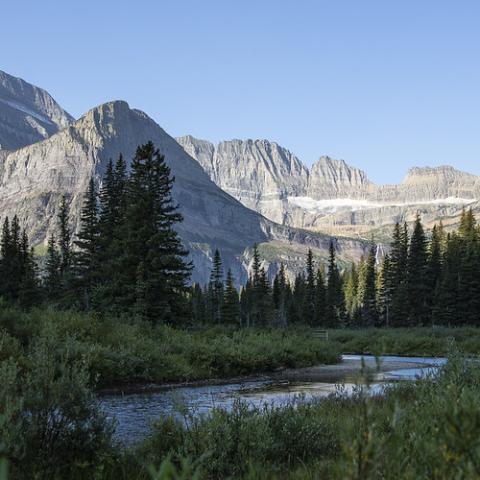
Larch near Bowman Lake at Glacier National Park/NPS, Jacob W. Frank
Though they might look like a conifer, and grow their seeds in a cone, larch can't hide among true conifers when fall comes to Glacier National Park in Montana.
No, unlike true conifers, larch's green needles turn golden in fall, and then fall to the ground much like any other deciduous tree's leaves once they've spent their color in their seasonal transition.
According to the U.S. Forest Service, the larch is a deciduous tree not only because it drops its needles, but because they can recycle nutrients, especially nitrogen, in nutrient-poor environments. "Larches also grow in snowy climates where heavy snow loads are less likely to break bare branches compared to trees burdened with needles during the winter," the agency adds.
"Its deciduous nature also makes Western larches especially resistant to fire and resilient to injury. Larch trees can lose much of their canopy and still regrow needles the following year," notes the Forest Service. "Its bark is also thick and protects the stem from fire. All these reasons give Western larch a competitive advantage over other conifers where it grows – and we can enjoy its autumn color."

Larch along the Middle Fork of the Flathead River in Glacier/NPS, David Restivo




 Support Essential Coverage of Essential Places
Support Essential Coverage of Essential Places







Add comment